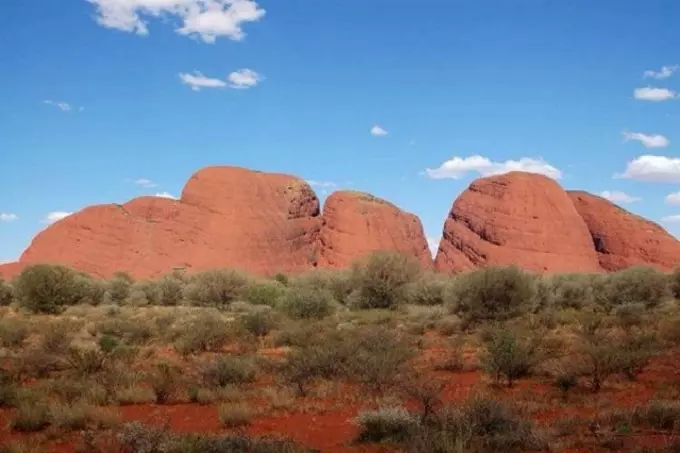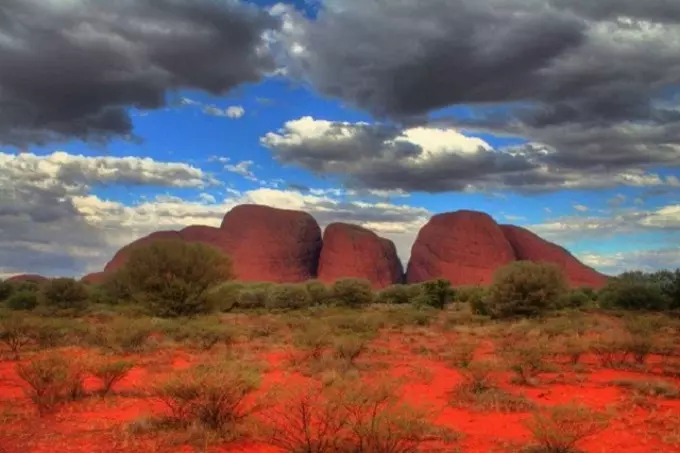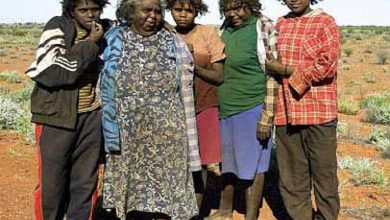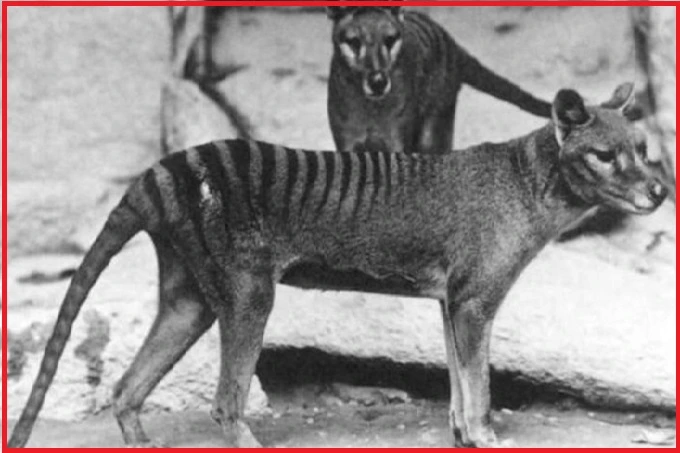Mysterious Uluru and Kata Tjuta

Uluru, also known as Ayers Rock, is a red stone monolith that rises in northern Australia. It sticks out like the dorsal fin of a huge red whale on a flat plain and is revered by Aboriginal people as a sacred place. It is rightly one of Australia’s symbols.
Not far from Uluru is the rocky formation of Kata Tjuta (which means ‘Many Heads’). Together they have been part of Kata Tjuta National Park since 1977. In 1985, the Australian government returned both of these rocks to the Northern Aboriginal Territories because the National Park is on their sacred land. Aboriginal people believe that life itself once originated in these places.

The size of Uluru is impressive. The red sandstone monolith protrudes above the plain at an average of 348 m, and its highest point is 869 m above sea level. The visible part of the rock, is 3.4 km long and 2 km wide! With perimeters of almost 9 km. Ejected from the interior of the Earth under tremendous pressure, this monolith was formed about 680 million years ago. Tectonic activity has compacted the clay and gravel and squeezed them to the surface.
Like islands in the ocean, the Kata Tjuta complex can be seen on the horizon 50 km from Uluru. In 1872, Ernest Giles discovered Kata Tjuta, becoming the first European to see this complex of rocks. He then named them “Olgas”, after Queen Olga of Wurttemberg. Kata-Tjuta is only 300 million years old, so it is clearly younger than Uluru. Unlike Uluru, it is made up of many layers of gravel compacted with sand and clay.

The local Anangu tribe considers both Uluru and Kata Tjuta to be sacred sites where a battle between snake men took place in ancient times. Kunia, the python woman, crawled to Uluru to lay her eggs. As she finished laying, she heard that the venomous Liru, a brown snake, had killed her nephew. Eager for revenge, Kunia crawled to the foot of Uluru, to a place called Mutityulu.
There she met one of Liru’s servants. She tried to enchant him with a dance, but the servant lifted her up in laughter. In anger, she grabbed a handful of sand and threw it on the ground. And where the grains of sand fell, both trees and grasses became poisonous but Liru’s servant kept laughing. Finally, Kunia grabbed her stick and struck him on the head. Her rage was so great that the second blow killed the Liru servant. The deep indentations from the blows of her stick are still visible on Uluru-they are imprinted in the stone. Kunia and her nephew turned into rainbow snakes. They still live in Mutitulu and look out for the Anangu tribe.

The Anangu natives believe that the sacred place of Uluru is endowed with a special power, a door between the world of humans and spirits. They consider climbing to the top a terrible sacrilege, and none of the natives dares to do so because they fear incurring the wrath of the spirits. Anangu is persuaded that Uluru still takes human lives to this day and that those who have climbed the mountain will be in trouble.
At different times of the day, Uluru’s coloring varies. Late in the day, the rock is much darker than during the day, but when the sun rises higher and higher, Uluru flashes purple and red, then lights up pink, and by noon it becomes golden. This fantastic play of light continues all day long. At the foot of the rock are many caves and rock paintings. To get to the top, you can use the ancient sacred trail.




